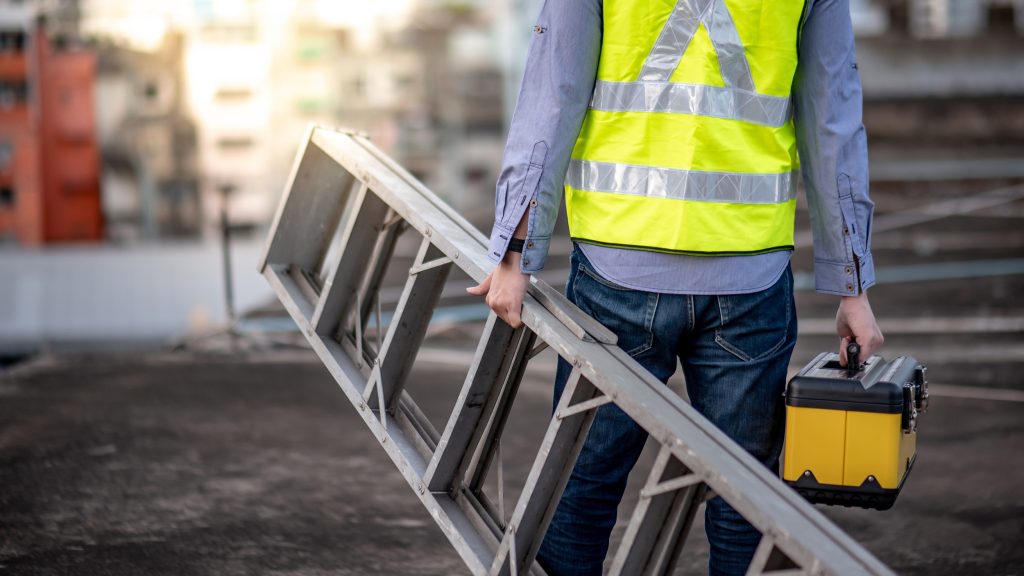Ladder Safety For Your Employees

You might think that your company has its safety protocols for employees covered, but do you have one for ladders? Have you ever thought, “It’s easy to forget about ladder safety; after all, there’s one in almost every home. Everybody knows how to use a ladder.”?
If this is your approach to safety at work, expect to see employee injury claims stemming from ladder injuries. To keep employees safe, it’s important that they know how to properly use a ladder and how to spot when one needs to be repaired.
Ladder Safety at Work
The first thing employees need to remember is that ladders are tools. This means that the same basic safety precautions used when operating other tools also apply to climbing up and down ladders.
While you may not need to put your employees through a comprehensive ladder safety program, the company should have protocols in place and displayed where everyone can see them.
Some of the items you should cover for basic ladder safety include:
- Do not climb a ladder if you feel dizzy, tired, or are prone to easily losing your balance.
- Ladders should never be used in windy or stormy conditions.
- The ladder should always be used with the legs firmly on the ground.
- Never use a ladder on slippery or uneven surfaces.
- Unless it’s a trestle ladder, only one employee should ever be on it.
- If the ladder must be placed in front of a door, ensure that it is locked or blocked to prevent it from opening and tipping over the ladder.
- Always read the safety information that is included with the ladder purchase.
A safety factor that is often overlooked is wearing the proper footwear on a ladder. Obviously, heels are dangerous and should never be worn by someone climbing a ladder. But, remember the same is true for smooth or leather-soled shoes. Footwear with plenty of traction is the recommended choice. OSHA-approved safety shoes will always be safe for use on ladders.
You also want to empower your employees to inspect a ladder for safety before they set foot on it. During the inspection, check if the ladder leans or sways to the side when standing. The rungs and safety latches should be firmly attached without signs of rust. If the ladder doesn’t pass the initial inspection employees must alert their shift supervisor.
Ladder safety devices are something that companies should also consider. These include a self-retracting line or a ladder cable system. These safety devices provide employees on ladders additional protection from slips, even if the ladder falls.
The Right Way to Safely Climb a Ladder
Using a ladder seems elementary. You climb up and down. While this is partially correct, there is a ‘right’ way to safely use a ladder, and it’s known as the Three Point-Of-Contact Climb: keeping both feet securely on the rungs and one hand on the side rail, even when working, on both ascent and descent – having three points of contact at all times.
This simple method eliminates a majority of the factors that contribute to accidental slips and falls. Here are some other guidelines for safe ladder use:
- Wear slip-resistant shoes so feet never lose contact with the rungs.
- Wear a tool belt or similar accessory so your hands are free.
- Never rush when climbing or descending. Instead, carefully place each foot on the rung.
- Do not move the ladder when you or someone is on it, even a few inches.
- Keep tool belt between the side rails. This will prevent it from getting caught.
Give Your Team A Step Up On Ladder Safety With Work-Fit
There is more to ladder safety than simply making it up and down without slipping. Certain protocols must be observed to prevent injuries.
At Work-Fit, we have services that can help you create a culture of safety in your workplace. More questions about ladder safety, or any other workplace safety program? Just ask! We’re always happy to help.